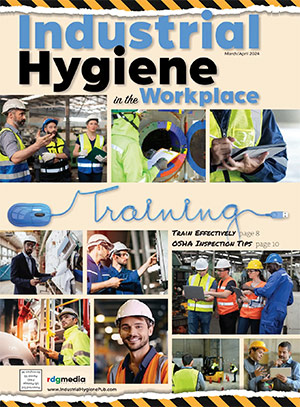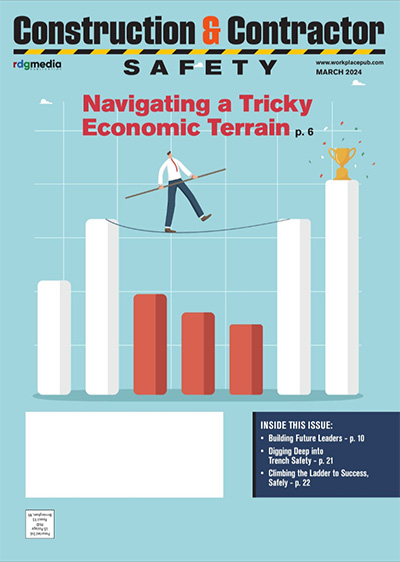Five kinds of health appointments you should consider keeping, despite the pandemic
Now that it’s clear that the coronavirus waves are going to keep coming, here are five health practices that experts say you might want to reconsider delaying, according to The Washington Post.
Cancer screenings
Perhaps you were due for a mammogram, a colonoscopy or a Pap test but put it off. In fact, health experts from the American Cancer Society, the American Society of Clinical Oncology, the Susan G. Komen organization and more have encouraged Americans to delay routine cancer screenings to minimize everyone’s exposure to the coronavirus (and to maintain health-care facilities’ needed supplies of masks, gloves and the like).
The response has been significant, according to data from two health-care technology companies.
By mid-April, the number of colonoscopies (to screen for colorectal cancer) had dropped by about 90 percent compared with the previous year, according to Komodo Health, a San Francisco-based company that collects and analyzes health-care data. In addition, according to a report from the Epic Health Research Network, mammograms to screen for breast cancer and Pap tests to screen for cervical cancer each declined by 94 percent in that time, compared with the average for that period in the preceding three years.
Over the short term, health experts generally agree that delaying these screenings is probably okay for most people. But your risks rise as time goes on. If a problem does exist, diagnosis gets delayed, which could mean a poorer prognosis because the cancer has had more time to progress. Treatment options for a more advanced cancer are often fewer and more invasive.
Also keep in mind what the success rate of routine screenings has yielded. For instance, deaths from breast cancer have declined by about 20 percent in the past three decades, attributable to early detection by mammography screening as well as improved treatments, according to an American Cancer Society report. It also notes that, in those three decades, the incidence of cervical cancer, as well as its mortality rate, has decreased by more than 50 percent, with most of the credit for the reduction going to Pap screenings.
However, the head of the National Cancer Institute has warned that Americans’ delays in screening, diagnoses and treatment because of the pandemic could lead to as many as 10,000 more deaths from breast and colorectal cancer in the next decade.
Dental visits
Dental problems early on — like very small decay in a tooth — rarely have symptoms, so people often aren’t aware they have a problem until a dentist examines their teeth, said Chad Gehani, president of the American Dental Association and an endodontist in New York City. Hence the recommended checkups and cleanings every three, six or 12 months, depending on the person’s oral health status, “to help spot dental health problems when treatment is effective and more affordable,” he said.
With the coronavirus pandemic, though, came guidelines to postpone elective dental care, which kept most patients out of the dental chair for at least several months. For those in the midst of treatment, that delay could become problematic.
For instance, children with braces are usually seen by their orthodontist every five to six weeks for adjustments, Gehani said, but missing appointments and leaving the braces unattended “can cause the teeth to move in a bad way… and sometimes cause damage in the root underneath.”
People in the midst of having a crown put on a tooth also could face problems if the process was interrupted for very long. If, for example, the temporary crown that was put on the tooth comes off and isn’t replaced right away, the existing teeth may “drift” into the area, creating a narrower space and requiring new measurements and a new permanent crown to be fabricated, Gehani said.
“Generally, with any dental procedure, if you start and don’t finish it, it will create more of a problem,” he said. “The longer time you wait, the more complexity you can generate in the mouth.” Where you once needed a simple filling, you might now need a root canal. Or, if you needed a root canal, you could end up with an abscess or maybe lose the tooth altogether.
Physical therapy
Say you sprained an ankle. Or perhaps you had knee-replacement surgery before the pandemic settled in. Or you’ve developed back or neck pain from working out of your so-called home office. Going to a clinic for hands-on physical therapy or ergonomic advice might not be on your okay-to-do list at the moment. But, said Robert Gillanders, a physical therapist with Point Performance Therapy in Bethesda and a spokesman for the American Physical Therapy Association, “when you treat injuries in the early stages, the outcomes are always better.”
To make sure that still can happen, physical therapists are turning more and more to telehealth, so-called virtual therapy, and have been pleasantly surprised, he said, at how successful it has been.
“I had always joked that you can’t do physical therapy remotely, but we’ve learned through this [pandemic] that we can,” Gillanders said. Using FaceTime, special apps designed for doctor-patient interactions, Zoom or similar software, physical therapists can watch, guide and evaluate patients as they walk, squat, balance, lunge or do whatever is needed to progress, all through a virtual appointment. And if you don’t have equipment, such as weights, at home, therapists can suggest alternatives; Gillanders said he advised a patient to load up a backpack with laundry detergent and start exercising to get stronger. Whatever works.
Living through the pandemic, he said, has opened more eyes to what’s possible through technology. After-work talks or classes on topics such as ergonomics or lower back pain attracted 40 or so people in a heavily urban area and only a handful in suburbia, but they drew 100 log-ins when done via Zoom, Gillanders said. “Now, people are way more open to the idea of doing a virtual class to learn something about a relevant topic than they are to schlepping to a clinic for the class,” he said.
Blood tests
Some people get their blood tested far more often than right around their annual physical. For instance, if you’ve had a blood clot and are taking an anticoagulant such as warfarin to prevent a recurrence, weekly blood tests may be needed to check the level of the drug in your system and possibly change your prescribed dosage.
“If their level is not high enough, there’s not enough anticoagulant in their body to prevent a blood clot. That’s a big risk,” said Alok Khorana, a hematologist and oncologist at the Cleveland Clinic in Ohio and chair of the Medical and Scientific Advisory Board for the National Blood Clot Alliance. “But if their level is too high, they have a risk of bleeding.” Between clotting and bleeding, he said, “we’re walking a very fine line.”
Nonetheless, anxiety about possible coronavirus exposure at a hospital or clinic has led some patients to miss their blood test check-ins, Khorana said. The ultimate downside? “There’s no real workaround,” he said. The testing needs to be done at a lab.
However, “most health institutions in the United States have been very aggressive in ensuring appropriate masking and social distancing by employees and patients… [and] are as safe as they can possibly be,” he said. Be cautious, yes, but “don’t jeopardize your own health” by skipping needed blood tests, he said.
Emergency room visits
If, fearful of contracting the coronavirus, you have held back from seeking emergency care during the pandemic, you’re not alone. ER visits nationwide declined by 42 percent during a four-week period from late March to late April, compared with the same time period a year ago, according to a report by the Centers for Disease Control and Prevention. That meant nearly a million fewer ER visits a week, described as “a striking decline” by the CDC. Patient volume picked up a bit by late May but was still 26 percent lower than in the preceding year.
The number of ER visits attributed to coronavirus-like symptoms increased significantly during the time periods the CDC report examined, but visits for a host of other reasons that people typically go to the emergency room — abdominal pain, musculoskeletal pain, sprains and strains, superficial injuries and more — all declined.
So did visits from people with chest pain or other symptoms of a heart attack, which the CDC says suggests “that some persons could be delaying care for conditions that might result in additional mortality if left untreated.” In a follow-up report, the CDC noted that 23 percent fewer people went to the ER for a heart attack and 20 percent fewer were treated for a stroke from mid-March to mid-May, compared with the preceding 10 weeks. Large hospital systems also admitted up to 50 percent fewer patients because of heart attacks and 39 percent fewer patients for stroke, according to CDC data.
The American Heart Association, noting that the pandemic will not stop heart attacks and strokes from happening, responded with a new public awareness campaign called “Don’t Die in Doubt.” It stresses that a hospital is the safest place to be if you have a medical emergency, even during the pandemic.
What to do?
Of course, there are plenty more things that people haven’t been doing because of a hesitancy about safety, because of a lack of money from having been furloughed or laid off, or for a host of other reasons — and all could have health and wellness consequences.
Not going to the gym? Eating more fast food from the easily accessible drive-through? Weight gain and loss of muscular and cardio fitness could make you more vulnerable to a range of health problems.
Not taking your youngster to get standard childhood vaccines? If hordes of people do that, a resurgence of measles could result.
Just remember: Everyone is different, and there is no single standard for which appointments are okay to delay, and which are not. Balance the risks and benefits and discuss them with your doctors. Your health and wellness are at stake.
Share on Socials!
Deputy Assistant Secretary of Labor for OSHA to Deliver Closing Keynote Speech at AIHce EXP 2022 in Nashville
AIHA Announces Sponsors for AIHce EXP 2023 Conference
Haws® Corporation Appoints Chuck Gruber as New CEO
Leaders in Industrial Hygiene
Council for Accreditation in Occupational Hearing Conservation (CAOHC)
Subscribe!
Sign up to receive our industry publications for FREE!









